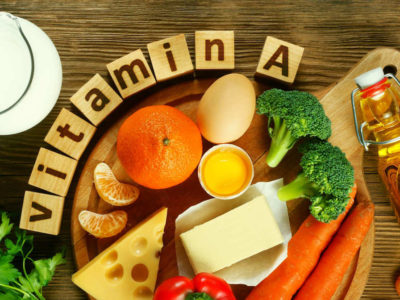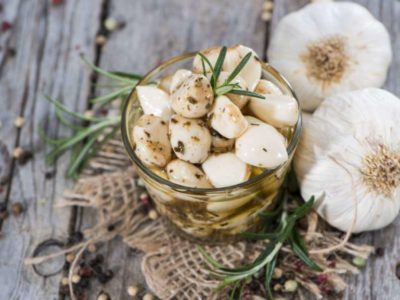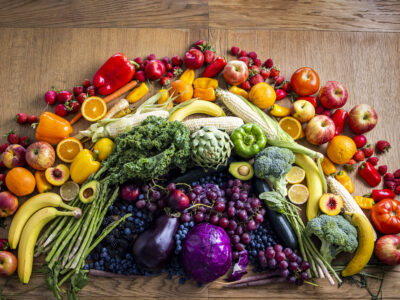Table of Contents[Hide][Show]
What to Grow in Spring+−
- 1. Broccoli
- 5 Symptoms Of Vitamin A Deficiency & How To Treat It
- 2. Carrots
- 3. Lettuce
- 4. Kale
- 5. Onions
- 6. Garlic
- 5 Ways to Boost Your Immune System Naturally
- 7. Peas
- 8. Radishes
- 9. Beets
- 10. Potatoes
- 11. Strawberries
- 12. Raspberries
- 13. Cucumbers
- Your Complete Guide to Vitamin K2 (MK-7)
- 14. Honeydew Melons
- 13. Herbs
It happens every year.
As soon as the temps start to go up, nurseries and home improvement stores roll out their seed packets, plants, trowels, and everything else garden related.
They’ve got it all figured out for you, except for one big question. What should you plant?
Now, you may be daydreaming about vibrant blooms and curling vines, but there’s an even better option.
Produce.
Because springtime fruits and veggies aren’t just incredibly delicious. They’re also surprisingly easy to grow, even if you’re new to gardening.
Plus, they’re packed with nutrients—a double win for your green thumb!
Ready to start planting?
What to Grow in Spring
There’s nothing quite as tasty as a crisp peas straight from your garden or a mouth-watering pasta dish heaped with your own garlic.
To help you get started, we’ve put together a list of our favorite, easy-to-grow fruits and vegetables for your spring garden.
1. Broccoli
Itching to get a start on your spring plants? Broccoli is strong enough to survive in cold temperatures, making it a great choice for early spring gardening. Broccoli is a member of the Brassica family, and these cruciferous vegetables are excellent easy-growing choices for spring planting. (Other common Brassicas include cabbage, mustard greens, Brussels sprouts, bok choy, cauliflower, collard greens, turnips, and many more.)
Broccoli has many health benefits. Surprisingly enough, one cup of broccoli contains as much vitamin C as an orange. It’s also full of nutrients such as calcium, iron, niacin, potassium, thiamine and zinc and vitamins A, B6, B12, D, E, and K.
Related
5 Symptoms Of Vitamin A Deficiency & How To Treat It
Do you have eye problems, gut issues, or itchy skin? You may be suffering from vitamin A deficiency
2. Carrots
Here’s another one for gardeners in colder climates! Carrots can be planted before the last frost. Choose loose soil and make sure to remove any obstructions, such as rocks.
Carrots are packed with vitamins! In fact, just one serving (half of a cup) of carrots contains 73% of your US RDA of vitamin A, plus vitamins C and K, calcium, fiber, iron, and potassium.
3. Lettuce
Lettuce is a great plant to grow in the spring because it is a cool-season crop that prefers mild temperatures. It can be grown in containers or garden beds, making it a versatile option for any size garden.
In terms of health benefits, lettuce is a low-calorie vegetable that is packed with nutrients like fiber, vitamins, and minerals. It is especially high in vitamin K, which is important for bone health and blood clotting. Lettuce has also been linked to reducing the risk of chronic diseases like heart disease and certain types of cancer. Plus, it is a tasty addition to salads, sandwiches, and wraps.
4. Kale
Kale, another member of the Brassica family, is a good spring plant because it is a cold-tolerant crop and can withstand frost and even snow (in fact it makes it taste sweeter).
In terms of health benefits, kale is a superfood that is packed with nutrients like vitamin C, vitamin K, and beta-carotene. It is also high in antioxidants and has been linked to reducing inflammation and improving heart health. Kale is a versatile vegetable that can be used in salads, smoothies, stir-fries, and more. Plus, it is easy to grow and can be harvested throughout the spring and into the summer.
5. Onions
Onions are another great choice for early spring gardens. They’re heartier than they appear, able to survive cool temps and even a short drought. Leeks and scallions (also members of the onion family) are perfect for spring planting as well.
Onions are a good source of vitamins and minerals, especially vitamins C and B6, copper, manganese, and potassium. They also help lower cholesterol, regulate blood sugar, and reduce your chance of developing Alzheimer’s Disease.
6. Garlic
Some gardeners traditionally plant garlic in the fall, but it’s just as easy to grow in the spring. It’s incredibly easy to grow from cloves; simply plant them 2 inches into the ground.
Garlic has some pretty amazing health benefits. It boosts your immune system, reduces inflammation, lowers your blood pressure, and contains antibacterial properties.
And did we mention it’s a highly effective all-natural insect repellent?
Related
5 Ways to Boost Your Immune System Naturally
It’s clear modern science has seen exponential growth within the past century. This has fortunately lead to advances in modern medicine, which have helped save countless lives. Unfortunately, we are still caught in the middle of a biological war on a microscopic scale – with our bodies as the battlefield. Just as the human race …
7. Peas
Are you looking for quick results from your spring garden? Then try your hand at fast-growing peas, which are ready to harvest in as little as 2 months.
Not only are peas sweet, crunchy, and nutritious, but the entire plant is edible. You can use the flowers and tendrils to garnish your favorite spring dishes.
Peas are surprisingly high in iron. They’re also a solid source of antioxidants such as vitamins C and E and zinc.
8. Radishes
Radishes are the perfect plant if you’re looking for quick gratification. In fact, depending on the variety, radishes can go from seed to harvest in anywhere from 3 to 7 weeks. Plus, even the leaves are edible!
Radishes are a natural antioxidant, high in vitamin C. They’re also a great source of dietary fiber.
9. Beets
Beets are a good spring plant because they are cold tolerant and can be planted in early spring, several weeks before the last frost date. They thrive when the days are warm (60–70 degrees F) and nights are cool (50 to 60 degrees F).
Beets are a nutrient-dense root vegetable that are high in fiber, vitamins, and minerals like potassium and folate. They have been linked to reducing inflammation, improving heart health, and even enhancing athletic performance.
Plus, beets are a versatile vegetable that can be roasted, pickled, juiced, used as a natural food dye, and more. The greens of the beet plant are also edible and can be used like spinach or Swiss chard.
10. Potatoes
Potatoes can be planted in mid to late spring (typically between mid-March to May depending on your growing zone) and are typically harvested in late summer or fall. The soil temperature should be at least 55°F during the day and 45°F at night before you plant seed potatoes. If you have a particularly wet and cold spring, wait a bit longer till the soil has dried out more.
Potatoes are a good source of vitamins and minerals, including vitamin C, potassium, and vitamin B6. They are also a good source of dietary fiber and resistant starch, which can help regulate blood sugar levels and promote healthy digestion. However, it is important to note that potatoes are also high in carbohydrates and calories, so they should be consumed in moderation as part of a balanced diet.
11. Strawberries
Strawberries are a great plant to grow in the spring because they prefer cooler temperatures and can be planted as soon as the ground can be worked. They are also a perennial plant, which means they will come back year after year with proper care.
Strawberries can be grown from seed, but it’s typically easier to buy plants. Strawberries also produce offspring via runners, which you could separate and space out from the main plant in the late summer or fall so they’ll be established for spring.
In terms of health benefits, strawberries are an excellent source of vitamin C, fiber, and antioxidants. They have been linked to improving heart health, reducing inflammation, and boosting the immune system. Plus, they are a delicious addition to any diet, whether eaten fresh or used in recipes like smoothies, salads, and desserts.
12. Raspberries
This delicious, antioxidant-packed fruit is considered by many to be a summer staple. But raspberries are even tastier when planted in the early spring.
For being such a small fruit, raspberries certainly pack quite the nutritional punch! Just one cup of this berry contains almost 60% of your US RDA of vitamin C. Raspberries also contain 8 grams of fiber per cup, more than most produce.
13. Cucumbers
If the first sign of warm weather has you racing for your gardening gloves, give cucumbers a try—you can plant them in as little as 2 weeks after the last frost. Just make sure you pick a sunny spot; cukes require lots of light to grow.
Cucumbers are about 95% water, so they’ll help keep you hydrated as the weather gets warmer. They also contain antioxidants, fiber, and 57% of your US RDA of blood- and bone-supporting vitamin K.
Related
Your Complete Guide to Vitamin K2 (MK-7)
Learn how vitamin K2 MK7 differs from vitamin K1 and discover its functions and benefits, signs of deficiency, and how you can incorporate it into your daily diet.
14. Honeydew Melons
Just because your early spring garden has gotten off to a good start, doesn’t mean it’s time to rest! Honeydews are an excellent late-spring addition to your garden, best planted when the soil is warm.
Just one cup of honeydew contains a whopping 53% of the US RDA of vitamin C and 12% of your potassium. They’re also loaded with B vitamins.
13. Herbs
Several herbs thrive in spring conditions. Here are some of the most common and easy to grow.
Chives: Chives prefer cooler temperatures between 55-75°F and are also a relatively hardy plant that can tolerate light frost, making them a good choice for early spring planting. Additionally, chives are a perennial herb, meaning they come back year after year, and planting them in the spring allows them to establish themselves and produce new growth for the upcoming growing season.
Chives have a mild onion flavor that complements many dishes and is a good source of vitamins A and C, as well as minerals like calcium and iron. The leaves of chives can be used fresh or dried in cooking, and they are a popular addition to soups, salads, and egg dishes.
Cilantro: Cilantro, also known as coriander, prefers cooler temperatures between 50-85°F. It’s also a relatively fast-growing plant that can be harvested within a few weeks of planting, making it an excellent choice for early spring planting. Additionally, cilantro is an annual herb that completes its life cycle in one growing season, and planting it in the spring allows it to mature and produce its leaves before the heat of summer causes it to bolt and go to seed.
Cilantro adds a fresh and citrusy flavor to many dishes and is a good source of vitamins A and K, as well as minerals like calcium and potassium. The leaves, stems, and seeds of cilantro can all be used in cooking and have a variety of culinary uses, from seasoning Mexican, Indian, and Southeast Asian dishes to making salsa and guacamole.
Parsley: Parsley prefers cooler temperatures between 50-70°F. Parsley can withstand light frosts and is a biennial plant, meaning it has a two-year growing cycle, and spring is the best time to plant the first year crop to allow for a longer growing season.
Overall, parsley is a great herb to grow in spring as it is easy to grow, adds a fresh flavor to many dishes, and is packed with vitamins and antioxidants.
Dill: Dilll prefers cooler temperatures between 60-70°F. Like, chives and parsley, dill can tolerate light frost. Dill is an annual herb, meaning it completes its lifecycle in one growing season, and planting it in the spring allows it to mature and produce its flavorful leaves and seeds during the warmer summer months.
Dill adds a fresh and slightly sweet flavor to many dishes and is a good source of vitamins A and C, as well as minerals like calcium and iron. The leaves, seeds, and stems of dill can all be used in cooking and have a variety of culinary uses, from seasoning fish and salads to flavoring pickles and soups.
The Benefits of Spring Gardening
You’ve seen how tasty springtime fruits and vegetables are packed with nutrients, but what about the overall benefits of working on your green thumb?
Here are just some of the rewards you’ll “harvest” from your early spring gardening.
Save Money
Does inflation have you taking a close, hard look at your shopping list?
Unfortunately, for many consumers, one of the first items they cut back on during tough times is fresh fruits and vegetables. Because although the benefits of fresh produce is undeniable, so is their cost.
Less healthy alternatives, especially pre-packaged, over-processed foods, are often more affordable for families on a tight budget.
But with a produce-laden spring garden, you can have the best of both worlds—saving money and eating healthy!
Many spring vegetables are inexpensive and easy to grow. Some of them can even be replanted (from seeds or cut-off tops), meaning that you only have to purchase them once.
Avoid Toxins
Unless you’re buying certified organic products at the grocery store, you don’t truly know what you’re eating. Insecticides, herbicides, and other toxic pollutants can make their way into your favorite foods.
One of the biggest benefits of growing your own fruits and vegetables is knowing exactly what they’ve been exposed to. You’ll get all of the delicious benefits, without any harmful “added” ingredients.
Load Up On Probiotics
One of the biggest benefits of growing your own food isn’t just what you eat, it’s what it’s grown in.
Produce grown in dark, rich soil is loaded with soil-based organisms (SBOs), including spore-based probiotics. These naturally occurring bacteria join forces with the beneficial bacteria already inhabiting your gut microbiome, improving your overall health and wellbeing.
However, most produce today is grown very differently. Today’s growing techniques and sterilization methods remove dirt, but they also remove any spore-based probiotics.
When you grow your own vegetable garden, however, you can:
- Add a top layer of compost to the soil instead of tilling (preserving precious beneficial microorganisms).
- Keep soil moist and rich.
- Wash, but don’t over-clean, your produce
Unfortunately, there’s no way to accurately measure the amount of probiotic goodness you reap from your garden.
To keep your gut microbiome balanced and support your digestive health, we recommend adding a spore probiotic supplement to your daily routine.
We suggest Just Thrive Probiotic, which contains four powerful spore probiotic strains, is guaranteed to arrive 100% alive in your gut and has 1000x better survivability vs. leading probiotics. Combined with your probiotic-rich produce, it’s a double health boost!
Final Thoughts
Pick a few of your favorites, make sure you have all the supplies you need, and unleash your inner plant parent as soon as the weather cooperates.
Your spring fruits and vegetables will load your favorite dishes with both flavor and nutrients.
And, best of all, you don’t need to be an expert gardener or have a green thumb to grow these easy options!
You May Also Like…







